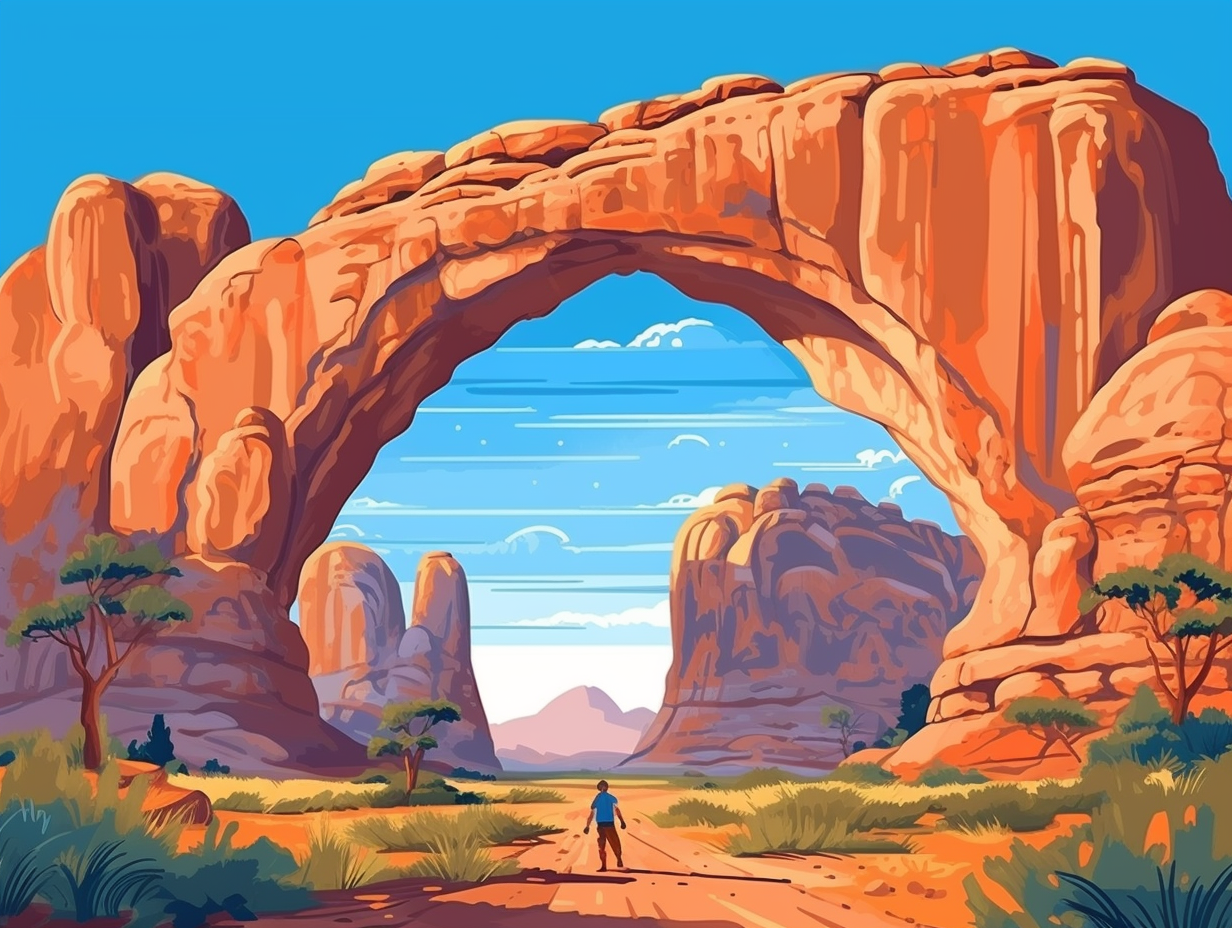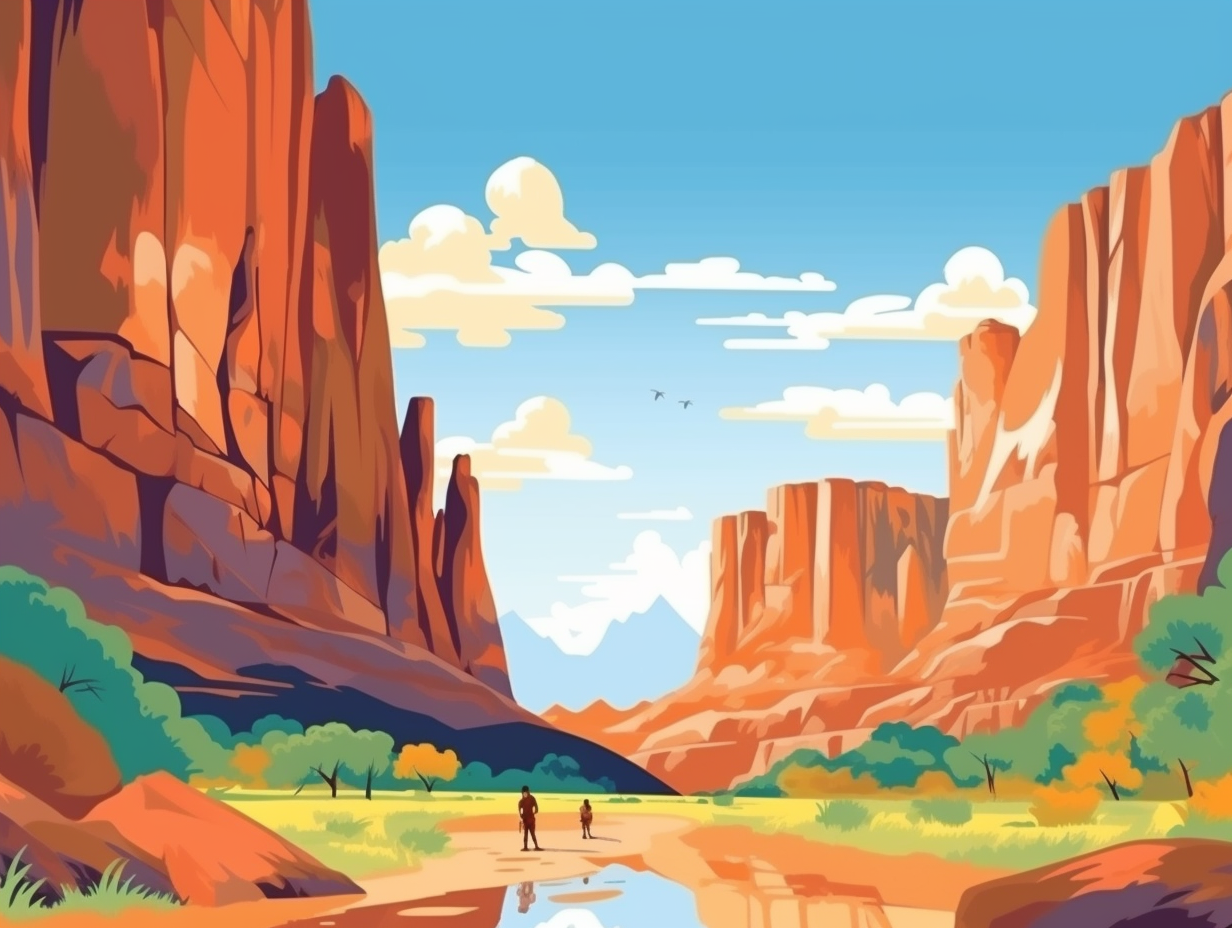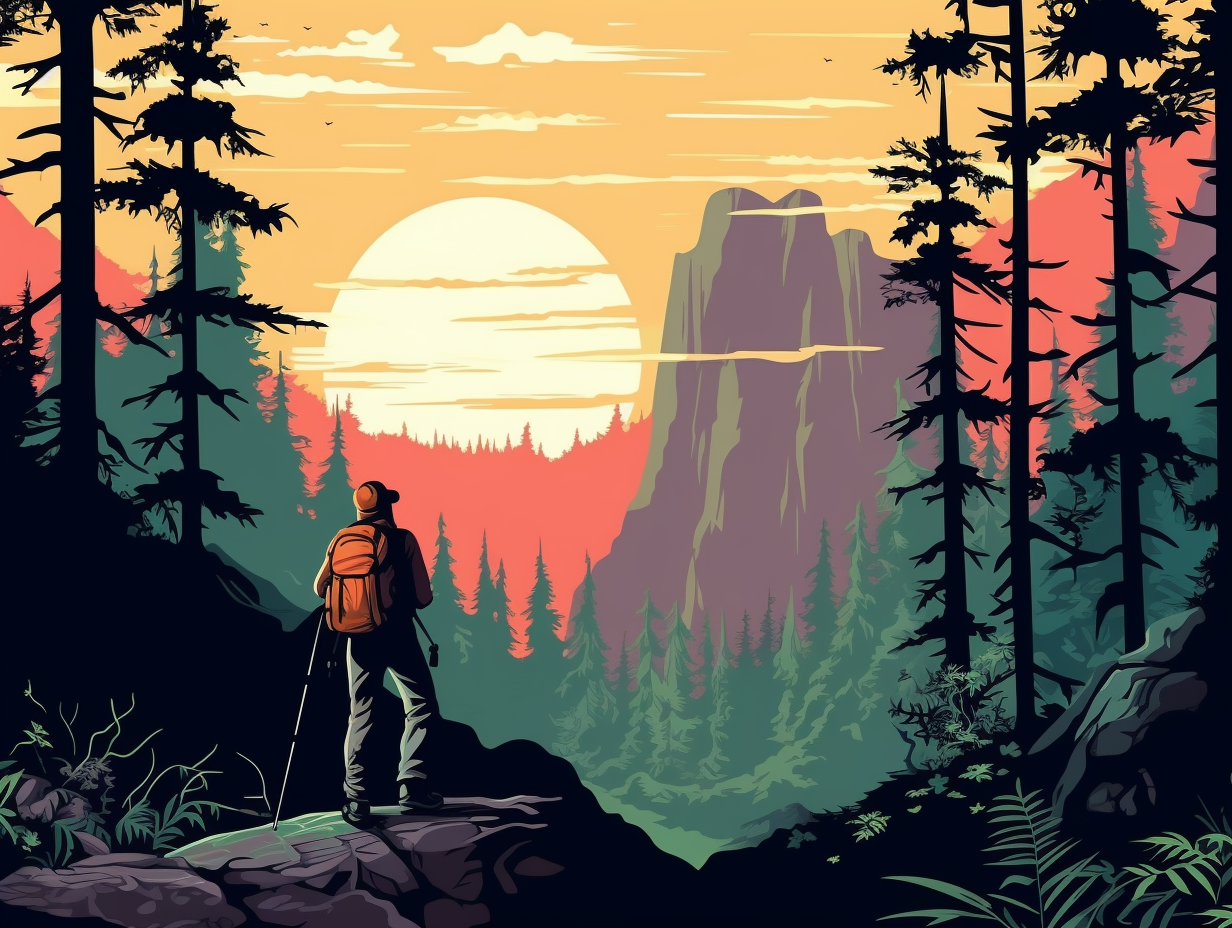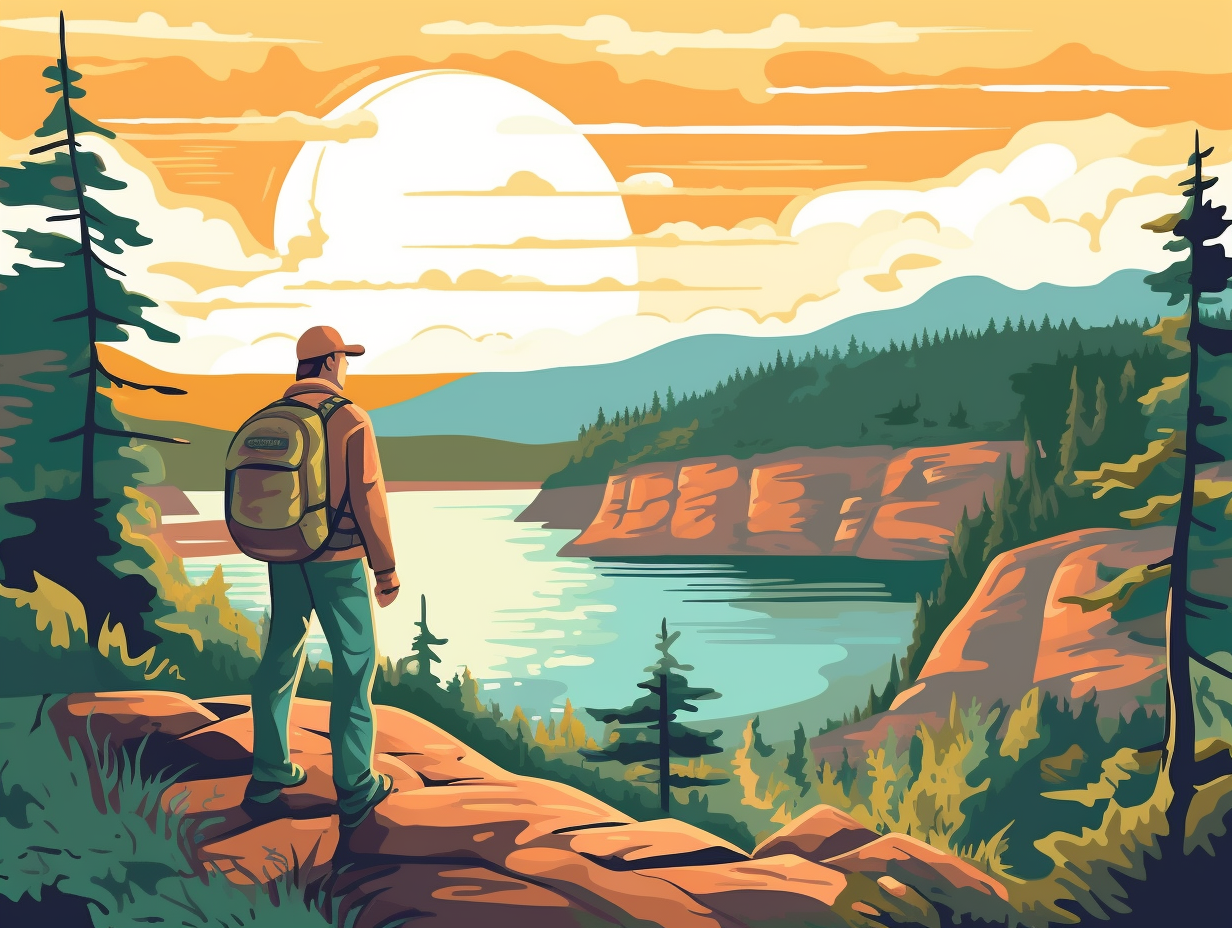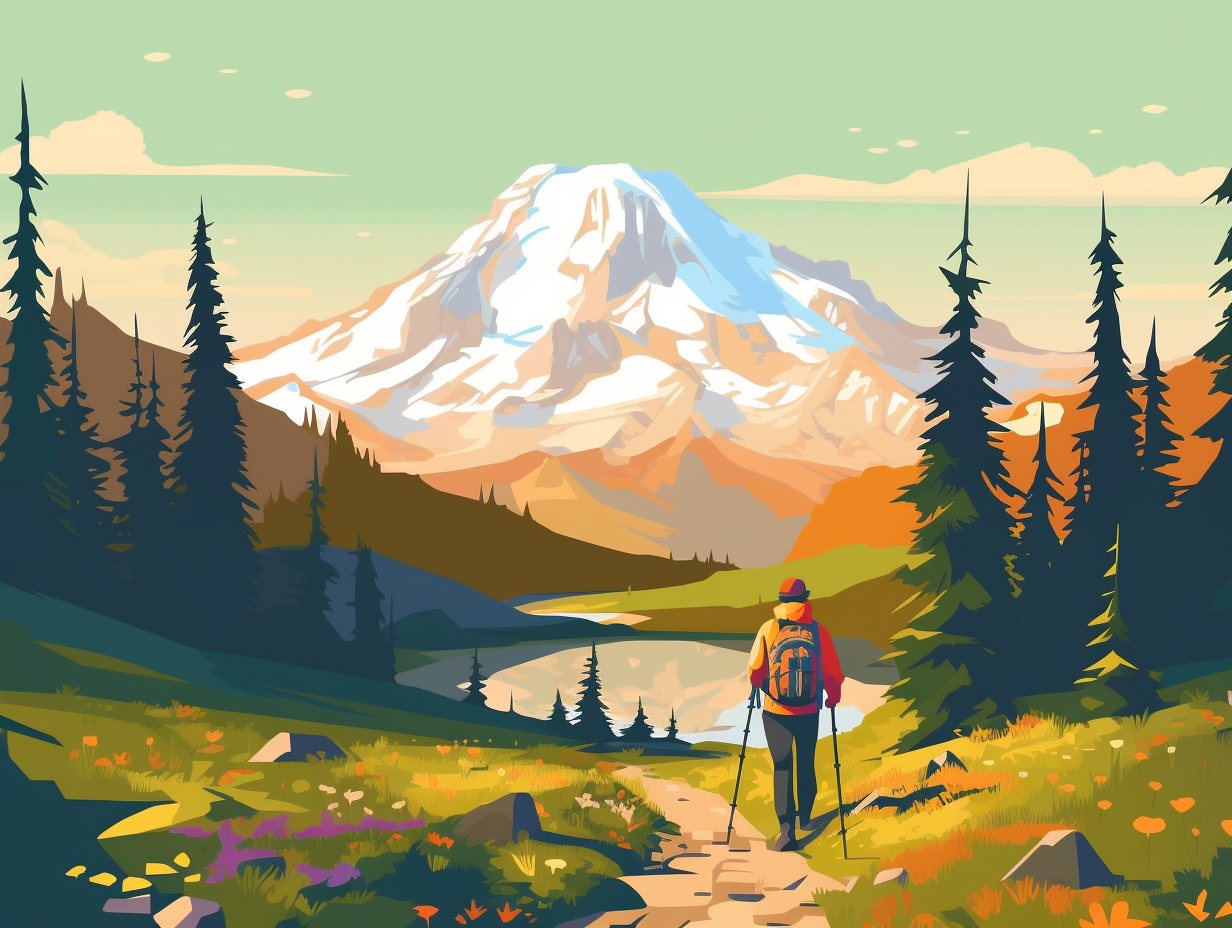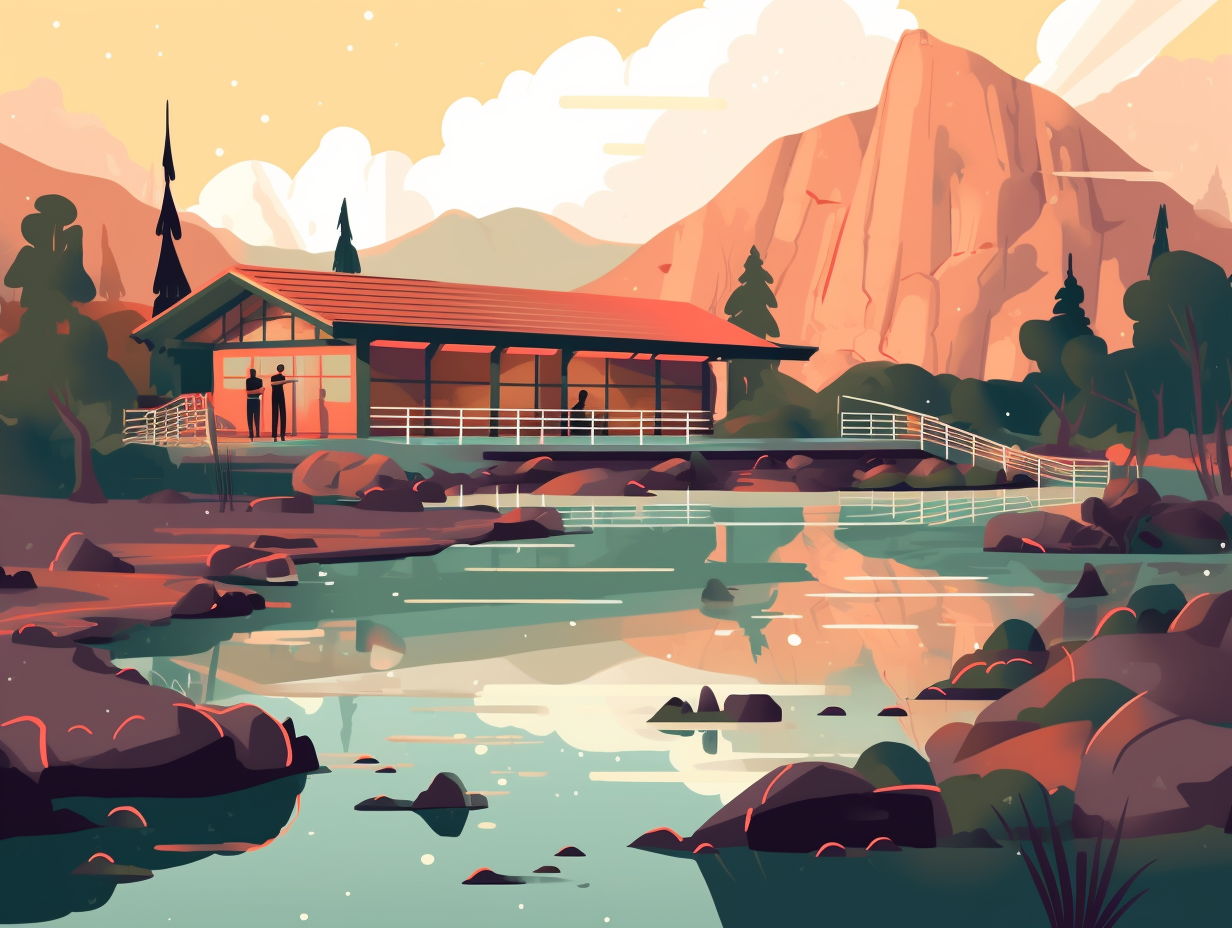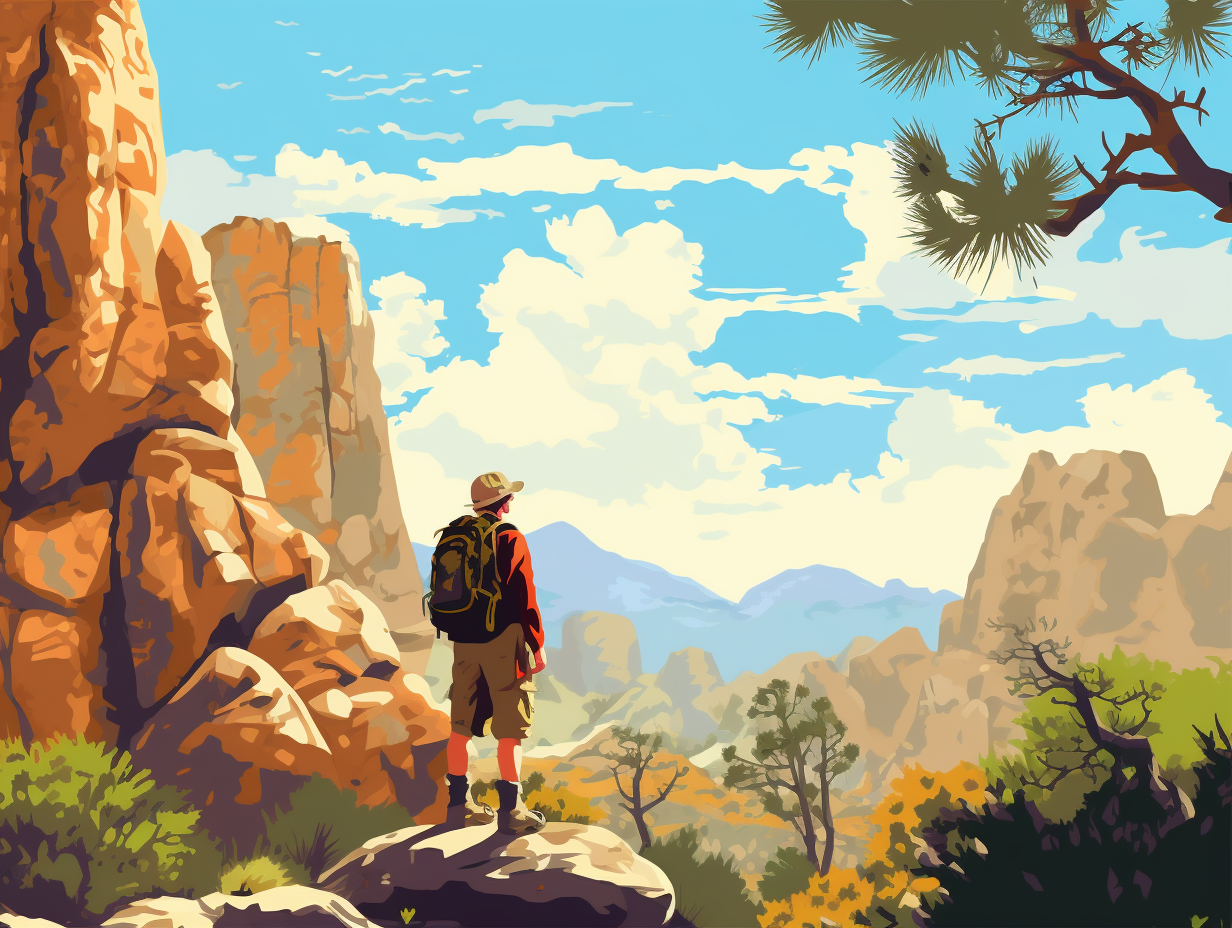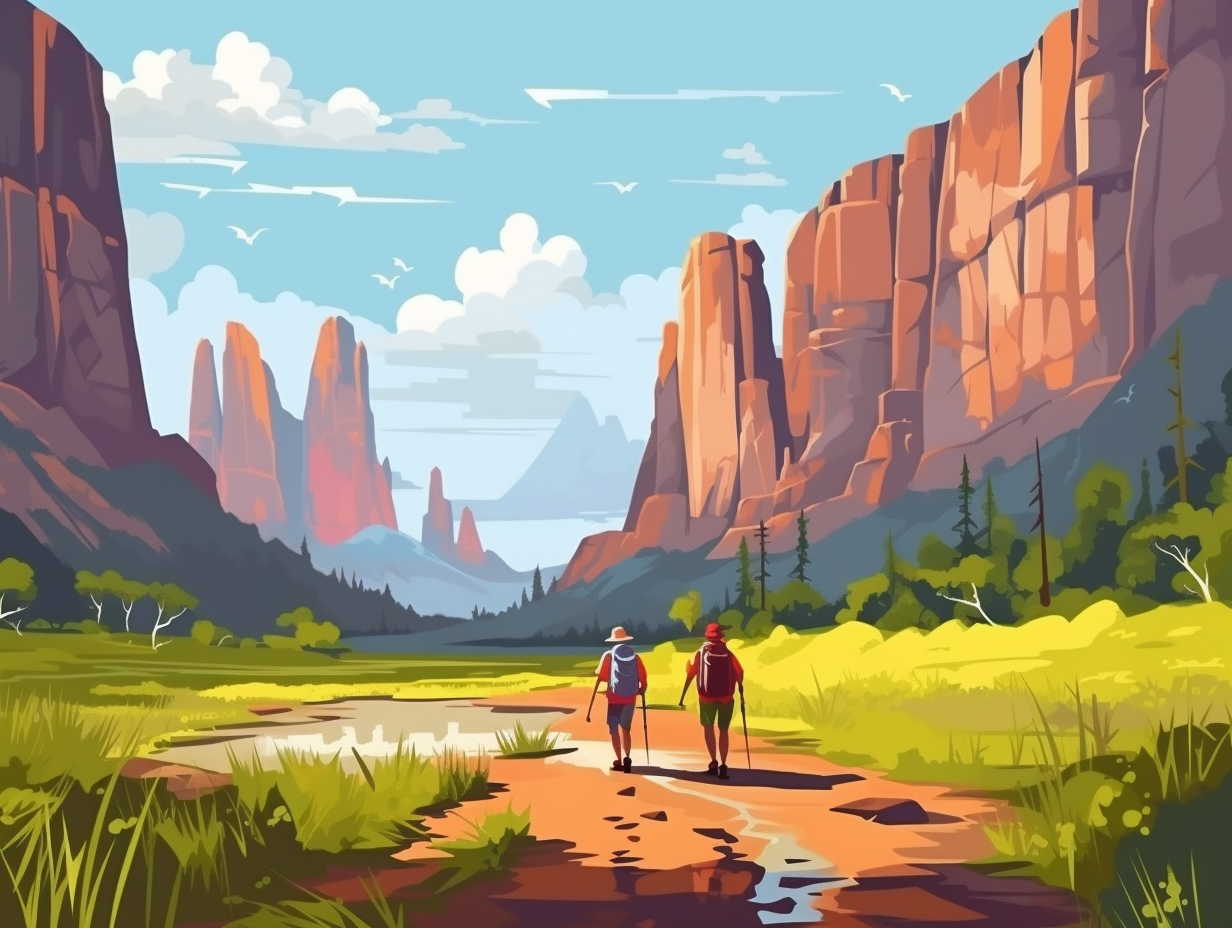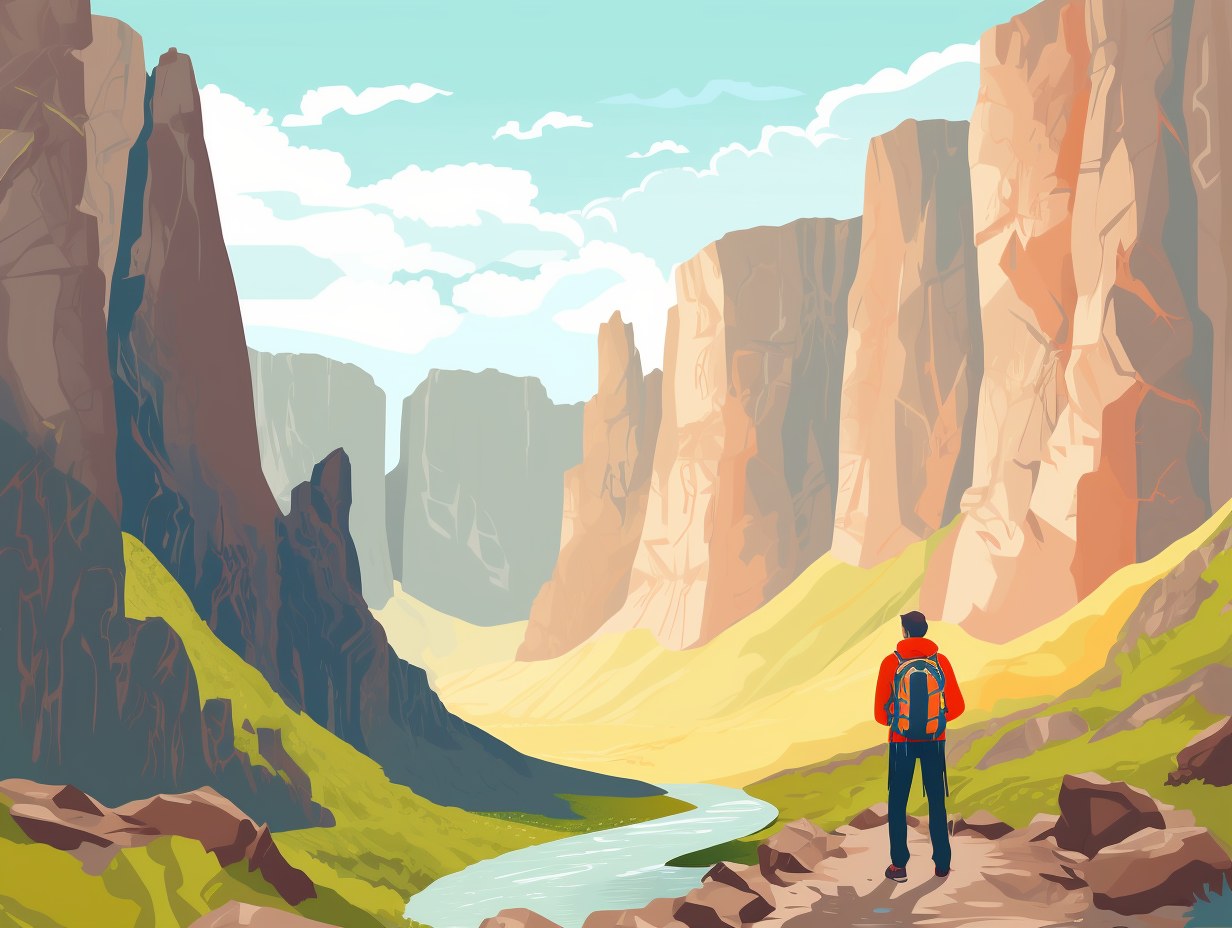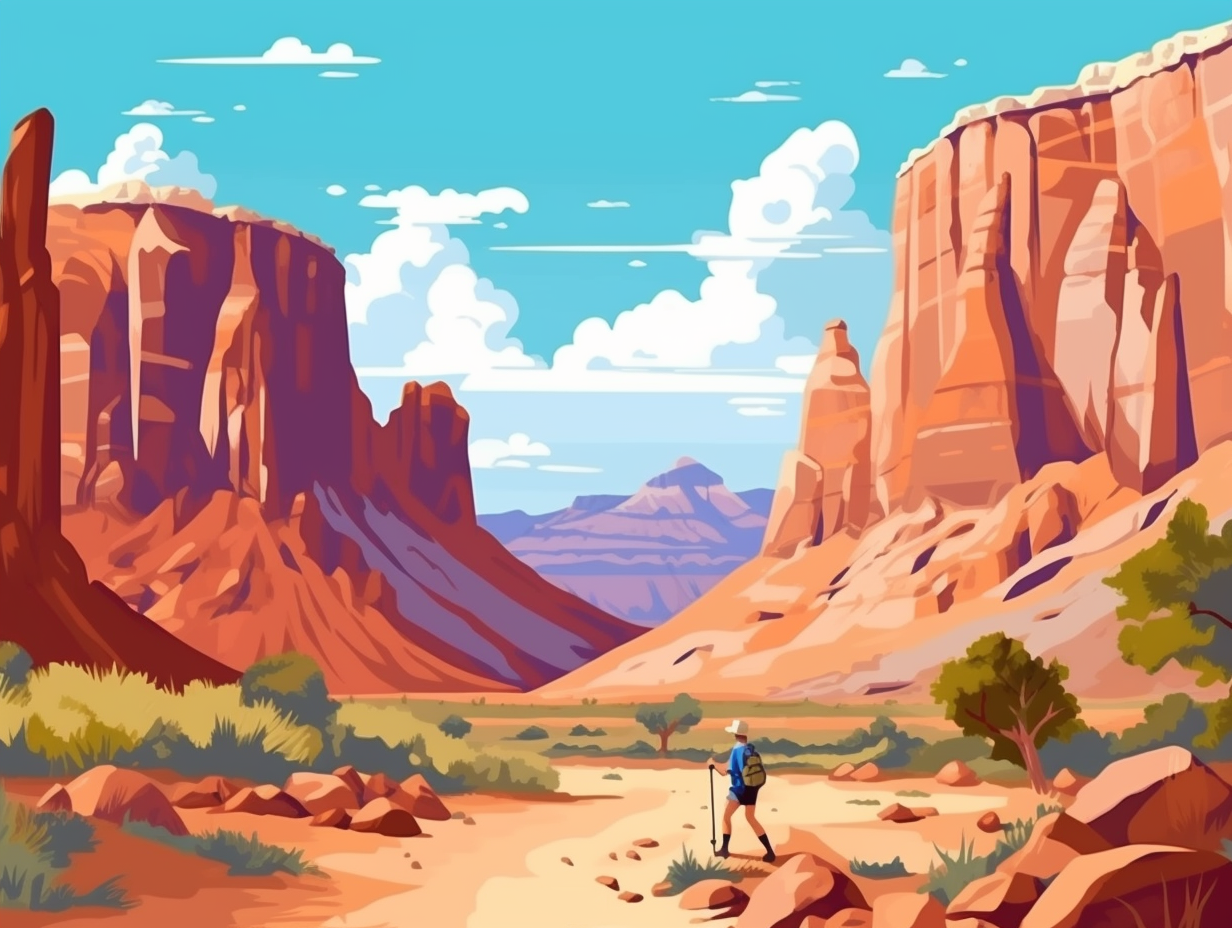Explore the Wonders: 27 Fascinating and Fun Facts About Yellowstone National Park
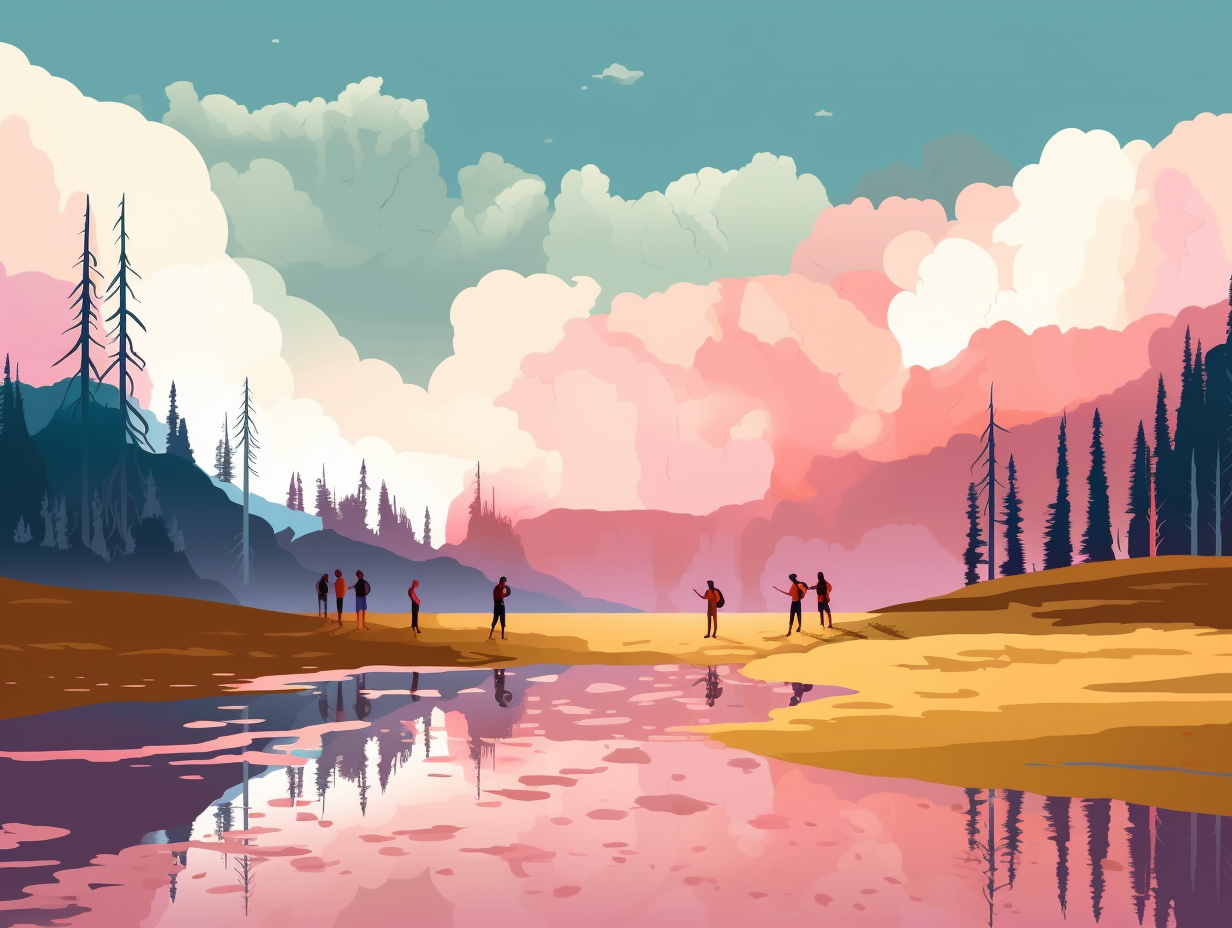
1. Yellowstone's Geyser Extravaganza
Yellowstone National Park's geysers are both the hot topic and the main attraction, boasting a steamy performance that blows other natural wonders out of the water: Hosting over 400 geysers, which is more than half of all the geysers in the world, Yellowstone is also home to the legendary Old Faithful that erupts every 90 minutes on average, spewing scalding water up to 185 feet (56 meters) high for awestruck audiences viewing from safe boardwalks and trails.
Source => nps.gov
2. Grizzly Bear Population Boom
You might say Yellowstone's grizzly bears have had a "bear market" boom in recent years, clawing their way up the population ranks and causing quite the furry frenzy: Since the 1970s, the population has grown from a low of 136 to an estimated peak of over 1,000 in 2021, yet this has led to increased conflicts with humans – especially when the bears get their paws on any available pic-a-nic baskets. That's why it's crucial for visitors to keep their food stashed securely, ensuring harmony between Yogi's cousins and their human friends in this wild wonderland.
Source => nps.gov
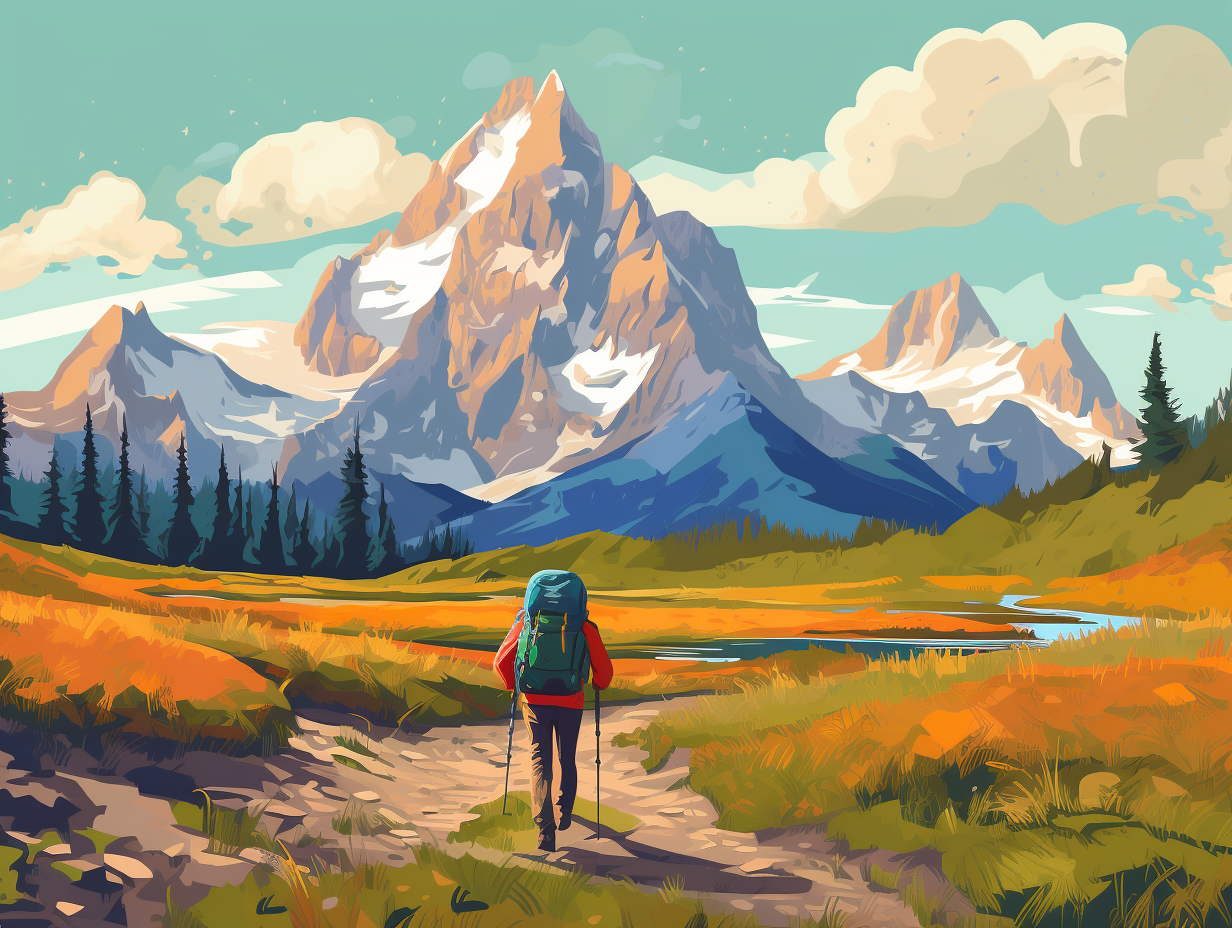
Did you know the Moulton Barn, often called the "Cindy Crawford of rustic dwellings," holds a deep history in Jackson Hole's early homesteading heritage? Discover its story and picturesque beauty with a stunning Teton Range backdrop! 🏔️✨
=> Fun Facts about Grand-Teton-National-Park
3. Yellowstone's Volcanic Dance Floor
Did you hear about the underground party at Yellowstone National Park? It's got a volcanic dance floor and a guest list that goes all the way down to the core: Yellowstone sits on a hotspot, a mantle plume that extends from the core-mantle boundary to the crust, creating magma and explosive eruptions. This geological phenomenon is responsible for the park's majestic hot springs, geysers, and seismic activity.
Source => usgs.gov
4. Steamboat Geyser: World's Tallest
If steamboats could fly, they'd definitely look up to this natural wonder: Steamboat Geyser in Yellowstone National Park's Norris Geyser Basin boasts the title of the world's tallest currently-active geyser and holds the record for the highest recorded eruption, launching water columns up to a staggering 400 feet in height.
Source => en.wikipedia.org

5. Godzilla's Spa: Grand Prismatic Spring
If you've ever wondered where Godzilla goes for a spa day, you're in luck – but you wouldn't want to swim near him: The Grand Prismatic Spring in Yellowstone National Park is not only the largest hot spring in the United States, but the third-largest in the world, boasting mesmerizing rainbow colors created by thermophilic bacteria and reaching depths of over 10 stories and 370 feet in diameter.
Source => ncjs.us
6. Thermophiles: Unlocking Scientific Mysteries
When life gives you lemons… or scalding hot springs, it gives you the key to unlock scientific mysteries too! Yellowstone's steamy soup of stunning geysers might look like a villain's bubbling cauldron, but it's actually home to some pretty nifty organisms: Thermophiles residing in these extreme conditions not only make an impact in their own secluded microbial world but have proven beneficial to revolutionary scientific research, including forensic and medical fields, thanks to their role in PCR techniques. Plus, they might just spill the tea on life beyond Earth!
Source => bmsis.org
7. Fossil Wonderland at Yellowstone
When it comes to paleontological party tricks, Yellowstone National Park has a fossilized ace up its sleeve: The park boasts one of the most diverse fossil records in the National Park Service, with plant, invertebrate, vertebrate, and trace fossils spanning over 540 million years, providing ample research opportunities and crucial data on the Cambrian Explosion and climate change.
Source => nps.gov
8. Coyote Acrobatics
Coyotes be like "Forget UberEats, I'm an acrobat!" As Yellowstone's premier pouncers, they gracefully leap and dive to snatch their wintertime meals hidden beneath the snow: These talented Yellowstone coyotes rely on their pouncing skills to catch small mammals, insects, fruits, and even fish, but remember, feeding them results in harmful human-animal interactions and disrupts the ecosystem.
Source => yellowstonepark.com
9. Yellowstone's Passionate Geysers
Talk about steamy relationships: Yellowstone National Park boasts the largest active geyser field on Earth, with over 500 geysers, including the iconic Old Faithful, which passionately spews hot water and steam up to 185 feet high, making a grand spectacle approximately every 60-110 minutes.
Source => nps.gov
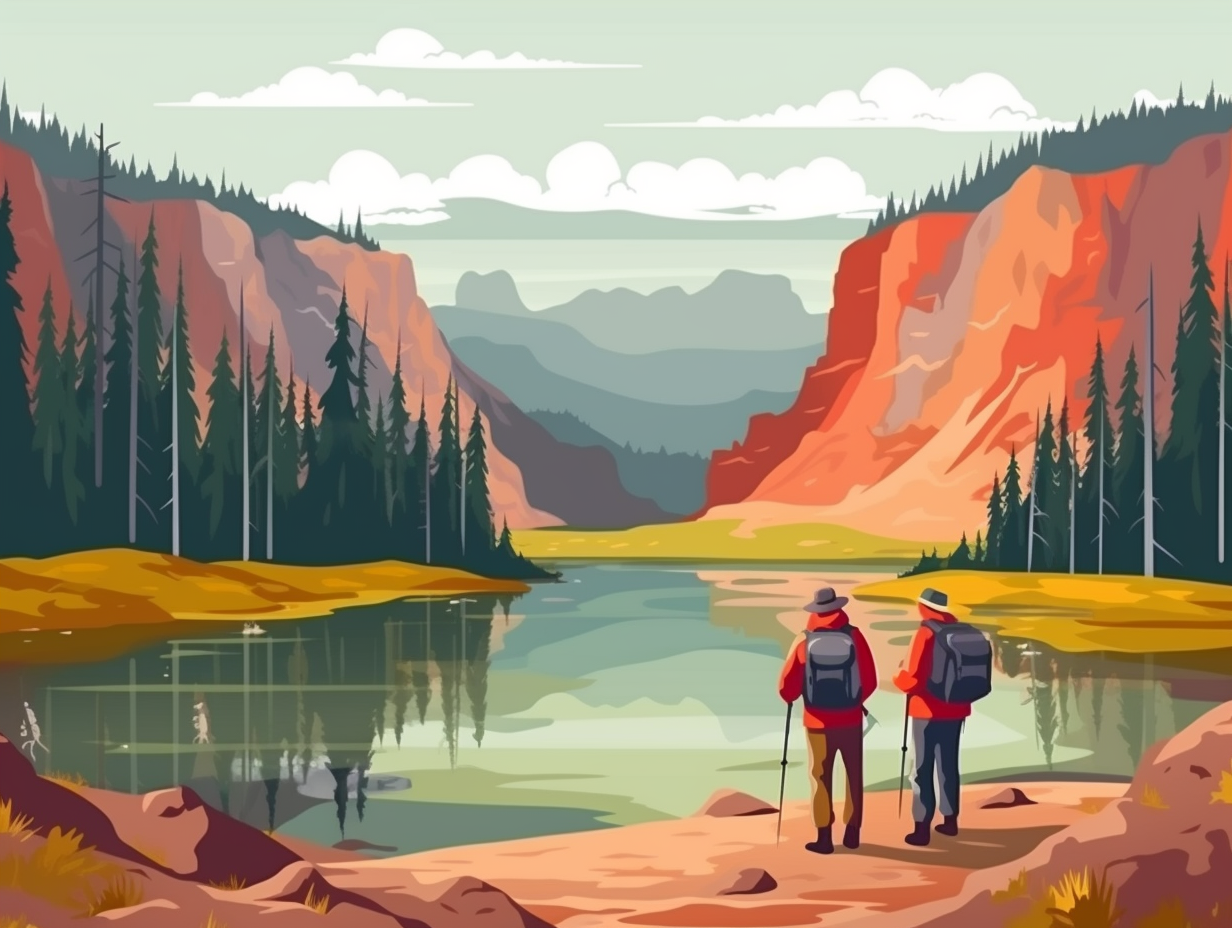
10. Indigenous Tribes' Eco-Airbnb
Before it was trendy to be green and eco-friendly, some ingenious tribes made their homes in nature's theme park: Indigenous tribes like the Kiowa, Blackfeet, Cayuse, Coeur d'Alene, Shoshone, Nez Perce, and Tukudika lived, hunted, and traded in Yellowstone National Park hundreds of years before it was officially established in 1872, enjoying hydrothermal hot-tubs and marveling at molten glass.
Source => usgs.gov
11. Wolf Dining Etiquette
In the world of wolf dining etiquette, it's all about picking the right dish to suit the dinner party: Yellowstone wolves choose their prey based on the size of their pack and the terrain. Smaller packs cozy up to the elk entrée, while larger pack gatherings opt for the more daunting bison banquet, which, according to a 2014 study, is three times more difficult to kill than the ever-popular elk dish served year-round in the Yellowstone buffet.
Source => yellowstonepark.com
12. Yellowstone's Whack-A-Mole Geysers
Geysers in Yellowstone are like a high-pressure game of whack-a-mole, constantly bubbling up and startling tourists with their spewing antics: The park boasts an impressive assembly of over 500 geysers, each with its own unique attributes, thanks to a peculiar plumbing system that builds up pressure and turns water into unpredictable steamy spectacles.
Source => nps.gov
13. Cutthroat Trout: Aquatic Superstar
In a classic case of "It's all about who you know" within the Yellowstone social circle, the cutthroat trout steals the spotlight and tantalizes everyone’s taste buds with its unparalleled culinary prowess: The Yellowstone cutthroat trout is the star of the park's aquatic ecosystem, dominating as the most widespread native trout species and serving as a crucial food source for 16 different bird and mammal species such as bears, river otters, and mink. Though facing challenges from nonnative species and habitat degradation, the remaining genetically pure Yellowstone cutthroat trout populations continue to flourish within the park's pristine waters.
Source => nps.gov
14. Frosty's Winter Resort
Did you know that Yellowstone National Park is like an exclusive winter resort for Frosty and his pals? You'll need a magical hat to get in once the snow starts falling: The park limits winter travel to guided snowmobiles and snowcoaches or their non-commercially guided counterparts, with Mammoth Hot Springs to the northeast entrance being the only exception. Don't worry, though, come mid-March, plowing crews start clearing away snow, and roads begin reopening in mid-April for us non-snowmen visitors.
Source => nps.gov
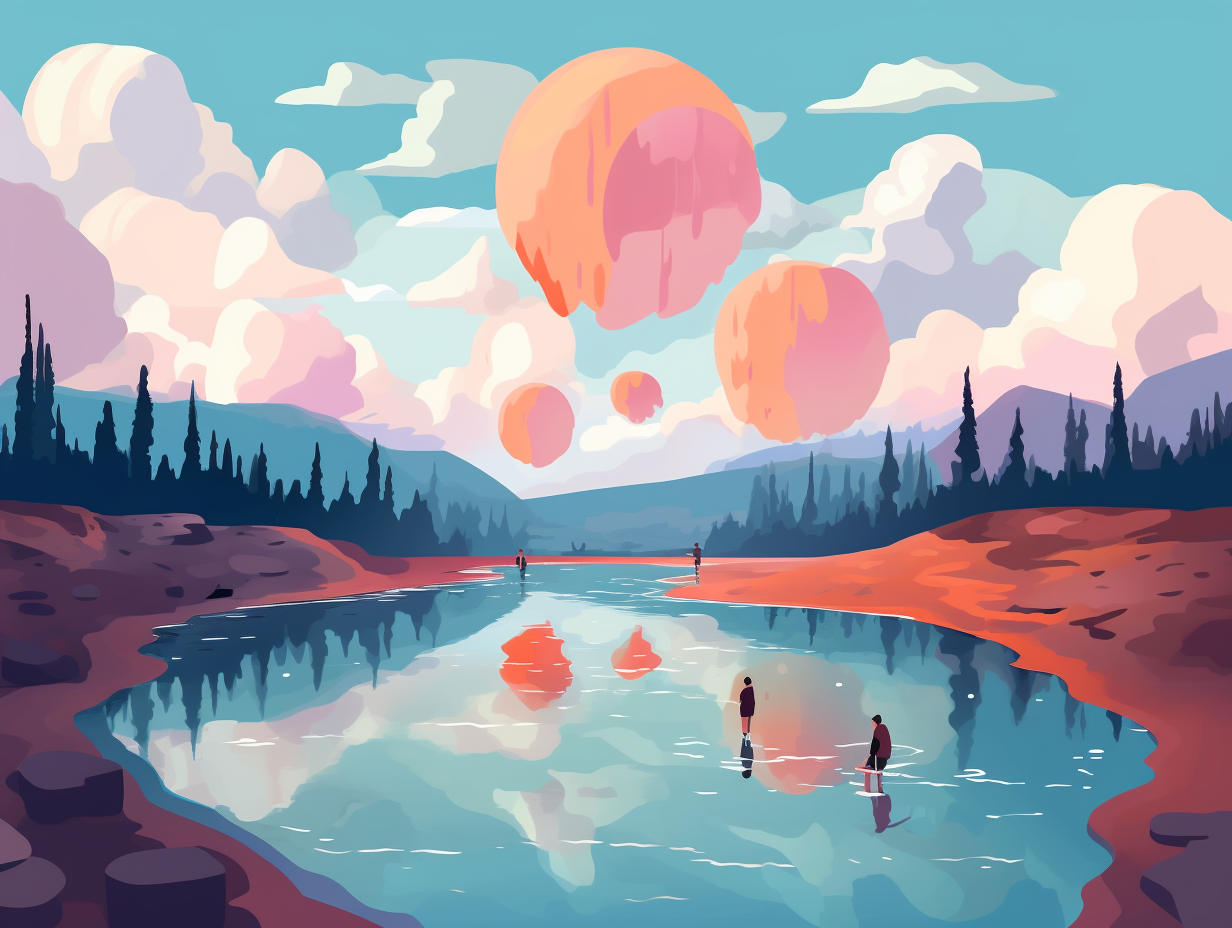
15. Old Faithful: Nature's Steamy Spectacle
What do you get when you mix a steaming hot pot of geological phenomena, colorful microorganisms, and nature's own spectacular showstead? Yellowstone National Park, of course: Home to over 10,000 hydrothermal features, among which are 500 geysers. One of these is the crowd-pleasing Old Faithful, which performs about 17 shows a day with eruptions reaching nearly 130 feet in height and lasting up to five mesmerizing minutes. And the secret behind these steaming spectacles? A mighty magmatic system beneath the park's surface, heating up the water and allowing thermophile microorganisms to flourish, painting a vivid, living canvas of otherworldly colors.
Source => nps.gov
16. Steamboat Geyser: Record Breaker
Talk about blowing your top: Yellowstone National Park houses the world's tallest active geyser, Steamboat Geyser, which can launch water as high as 300 feet (91 m) during major eruptions - a spectacular aquatic lift-off only exceeded by Excelsior Geyser and Sapphire Pool in the park's known past.
Source => nps.gov
17. Yellowstone: A Gas-Passing Machine
Who knew that Yellowstone was one gigantic, gas-passing machine?: Yellowstone's thermal features spew mostly steam and carbon dioxide, with traces of helium, hydrogen sulfide, nitrogen, oxygen, methane, and ammonia – sourced from deep magmatic systems, shallower crustal sources, and the atmosphere. Fun fact: Mud Volcano has the strongest magmatic signature in the park, while Devil's Den and Washburn Hot Springs release gas with a delightful tar-like aroma of hydrocarbons mixed with ammonia from crustal rocks.
Source => usgs.gov
18. Beaver Engineers Save Streams
Move over, human engineers, the beaver brigade is here to fix your stream problems: Yellowstone National Park has implemented a nifty Beaver Restoration Assessment Tool (BRAT) to identify ideal locations for reintroducing beavers, which will, in turn, improve stream functions and fish and wildlife habitat in less-populated areas of the park.
Source => fs.usda.gov
19. Elk Antler Aphrodisiacs
Gentlemen elk of Yellowstone National Park partake in a rather unique antler-tossing soiree each year, where they shed their impressive headgear and unwittingly become the center of attention for eager antler-preneurs with bedroom intentions: Interestingly, these discarded antlers can fetch up to $6 per pound, owing to their aphrodisiac properties in certain cultures, but removing them from the park is strictly forbidden and can result in six months of antler-less confinement and a $500 fine.
Source => nytimes.com
20. Quality Fish in Yellowstone's Sea
You know what they say, there are plenty of fish in the sea, but Yellowstone National Park prefers quality over quantity: Housing just 11 native fish species, including the largest concentration of inland cutthroat trout around, the park's waters are a piscine paradise. However, uninvited aquatic party crashers have threatened these fin-tastic residents, leading to the implementation of the Native Fish Conservation Program. With the help of the non-profit, Yellowstone Forever, our beloved park is fighting for the swimming underdogs' right for a fish-tastic future.
Source => nps.gov
21. Yellowstone's Hot Tub Party
Ever had a burning desire to witness the fury of Mother Nature’s own hot tub party? Well, look no further than Yellowstone National Park: boasting the world's largest gathering of geothermal features, this natural wonder houses a whopping 50% of Earth's known steamy spectacles within its sprawling 3,472 square miles.
Source => history.com
22. Baby Bear Chauffeurs
Who needs a chauffeured limousine when you've got Mama Bear's back for a snowy ride? At Yellowstone National Park, some grizzly cubs have found an adorably resourceful way to stay warm: Photographer Steve Hinch witnessed a cub hitching a ride on its mother's back while she foraged for voles in snow-covered meadows, keeping its tootsies toasty and dry while Mama worked tirelessly. Paw-some parenting in action!
Source => dailymail.co.uk
23. Black Bears' Culinary Skills
Move over, Goldilocks! The black bears of Yellowstone National Park seem to have taken a culinary class from their distant fairy tale cousins: These fuzzy foragers are more than just porridge connoisseurs, and have curated a seasonal menu to make any foodie envious: In spring, they munch on grasses and forbs; summer is all about fresh, juicy, tree-borne fruits; and come fall, they chow down on a delectable mix of hard and soft mast. Insects and small mammals occasionally make their way into a bear's belly, and a little carrion à la carte accounts for 15% of their diet – talk about a well-rounded palate!
Source => greater-yellowstone.com
24. Quaking and Shaking Yellowstone
Yellowstone National Park: where the ground's got moves like Jagger with its constant quake and shake! But don’t worry, it's all in good spirit: these shakers, ranging from 700 to 3,000 earthquakes per year, are actually instrumental in maintaining the park's hydrothermal activity. Far from creating new hot pools or changing geysers, they help keep the "plumbing" open, preventing fractures and conduits' closure by mineral deposits and even visibly affecting Old Faithful Geyser's performance.
Source => nps.gov
25. Campers' Dream Sleepover Site
If campers ever decided to throw a grand sleepover party, mother nature would give a thumbs up: Yellowstone National Park boasts over 2,000 campsites scattered across 12 campgrounds, providing visitors with breathtaking beauty, countless outdoor activities, and memories that'll outlive your tent.
Source => nps.gov
26. U.S. Army's Poaching Crackdown
Before the park rangers brought order to Yellowstone and its wild ways, Uncle Sam had to send in some reinforcements straight from the cavalry – all to stop the poaching party: From 1886 to 1918, the US Army managed Yellowstone National Park, tackling rampant poaching and preserving wildlife. These uniformed defenders guarded attractions, booted troublemakers, and put the shackles on poachers like a certain Ed Howell. This led to the National Park Protection Act of 1894, giving the Army even more power to protect the park's treasures and ultimately paving the way for the National Park Service in 1916.
Source => nps.gov
27. Waterfalls Galore at Yellowstone
Water you waiting for? Yellowstone is overflowing with pure cascading joy: The park is home to over 45 named waterfalls and hundreds more unnamed, just waiting to splash into your heart, with Lower Falls of the Yellowstone River stealing the show at a jaw-dropping 308 feet!
Source => en.wikipedia.org
Related Fun Facts

